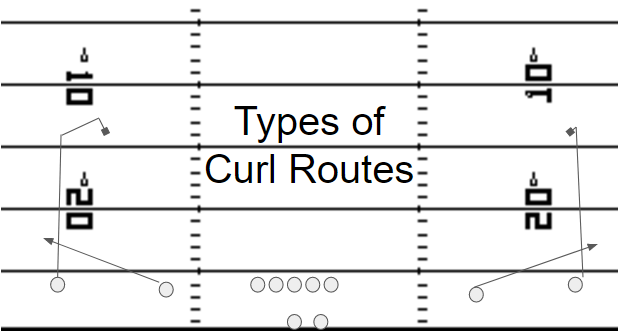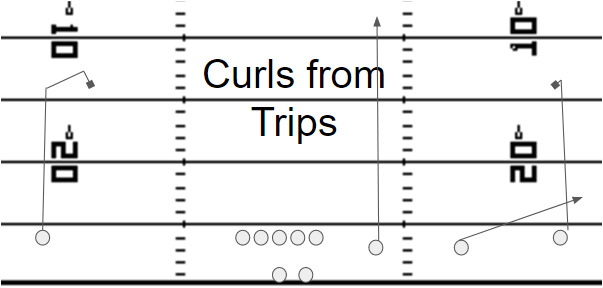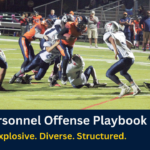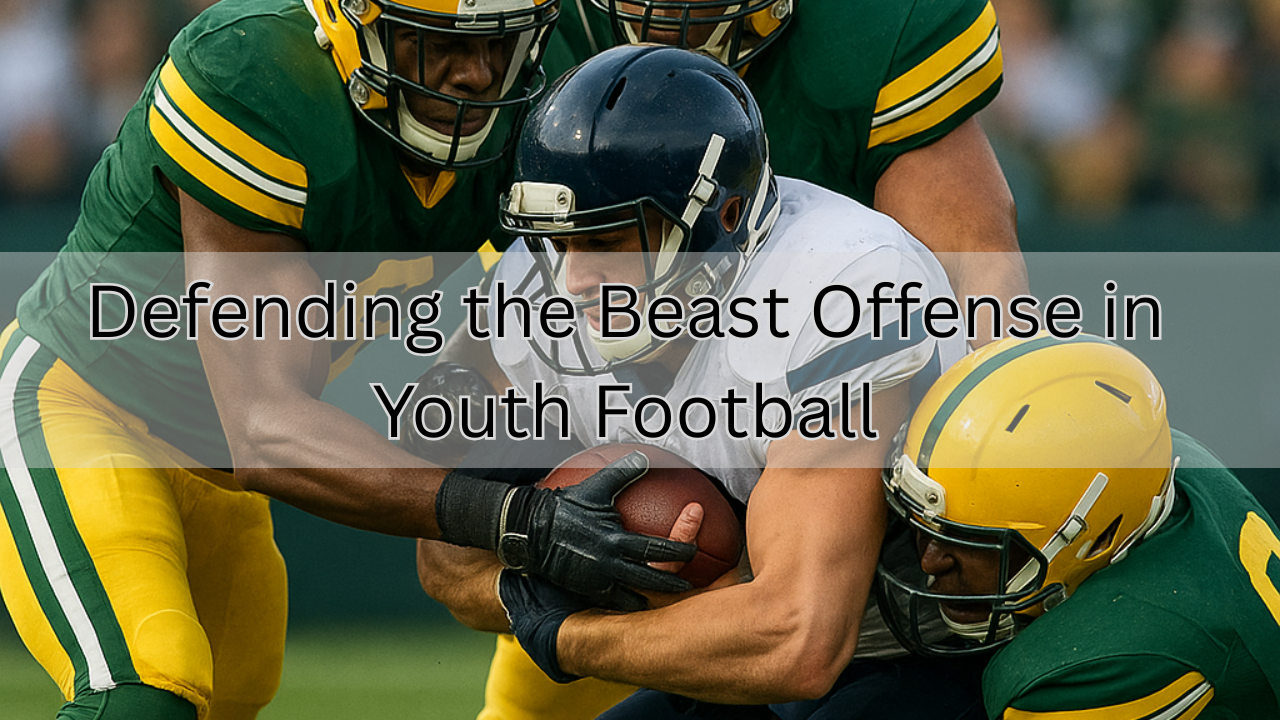Curl Flat Passing Concept

The Curl Flat passing concept is a staple off almost all passing attacks. The basic idea is that the offense is looking to create a high-low read on the flat defender. This is a simple concept that is excellent at attacking Cover 3.
Curl Flat Passing Concept
The basic passing routes are very simple and easy to install. The #1 receiver will run a curl route. There are two main types of curl routes. The first is a basic curl route where the receiver will push vertical to 10-12 yards and then plant and face the quarterback. The other option for the curl route is that the receiver pushes vertical for 7 yards then plants on his outside foot and begins to run a Post route. He runs two steps of the Post route before cutting off the route and facing the quarterback.
While both of these Curl routes are run differently, the goal remains the same. The receiver wants to find a window, or an area of space that is not covered by a defender, where he can face the Quarterback and be open for a pass. Many times this window is just inside of the flat defender. The traditional curl route tends to be an easier route to run but the receiver needs to be savvy enough to move around to find this window. The Post Curl route is a little more difficult route to run but it tends to do a better job of putting the receiver in the window. Each route has it’s strength so it really depends on the strengths of the receiving corps, quarterback and coach.
The second route that is present in the Curl Flat concept is the flat route. This route is designed to stretch the defense horizontally to widen the window for the Curl route. Just like the Curl route there are multiple ways to teach the flat route which can change depending on who is running the route. The most universal way of running the flat route is to have the #2 receiver run a 5 yard speed out.
The major difference between a speed out and a basic out is that on the speed out the receiver will round the cut and focus on getting width immediately. This tends to be better against a zone coverage. Some teams use a traditional 5 yard out. This can be good against man coverage teams but also tends to delay the route which lets the overhang defender stay in his zone to cover the curl. The traditional out tends to pair better with the Post Curl because they are both longer developing routes.
Arrow from Tight End, Arrow From Back, Flare from Back
The key to having a simple passing attack is to be able to run the same concept from multiple formations. This means that many times the player who is running the flat route will not be a detached receiver and instead might be a Tight End or Running Back. In either case they must understand the concept and the role of their route in the concept. Their job is to stretch the defense horizontally. For a Tight End many times this means that he will need to run an Arrow instead of a 5 yard out or a speed out. If #2 receiver happens to be a Running Back there are two options.
The first is for him to run an Arrow, while this gets him further upfield. The downside of this route is that it takes longer for him to stretch the defense and open up the window for the Curl route. The other option is for him to run a swing route. The strength of this route is that he will get horizontally quickly, but because he is behind the line of scrimmage some defenses are taught to stay back in their pass zone and come up and make the tackle.
Most offenses now have a trips formation that they like to throw out of. In order to keep things simple many offenses are moving to default routes for the #3 receiver. In the case of an under center 5 step pass the traditional route for #3 would be a seam route. This has the effect of keeping the safety from being able to drop down and defend the curl.
The Curl Flat passing concept is a great concept for all levels against a single high defense. It presents the Quarterback with a very simple read and can force the defense to bring an extra defender out of the box to cover the pass.
(See Also) Flood Passing Concept
(See Also) 4-Verticals Passing Concept












